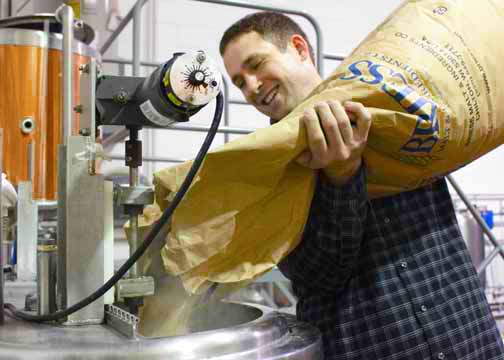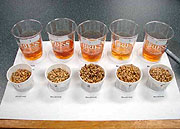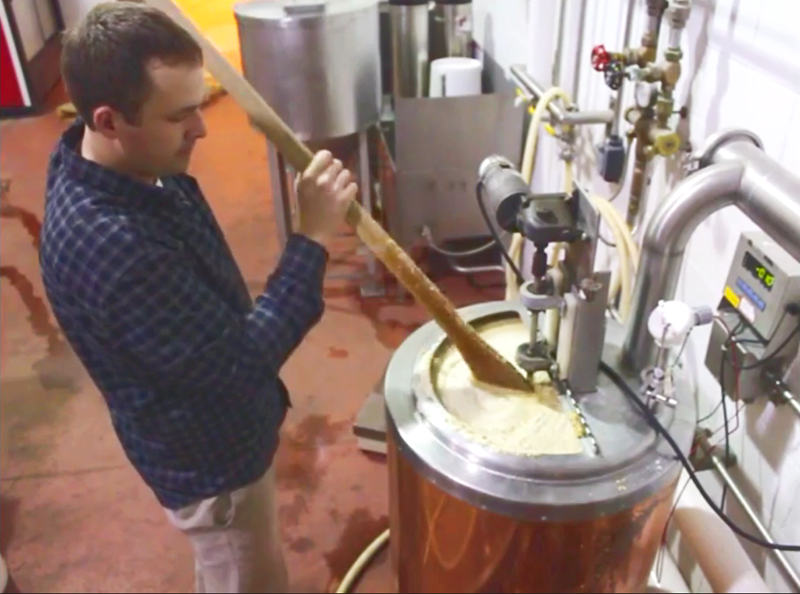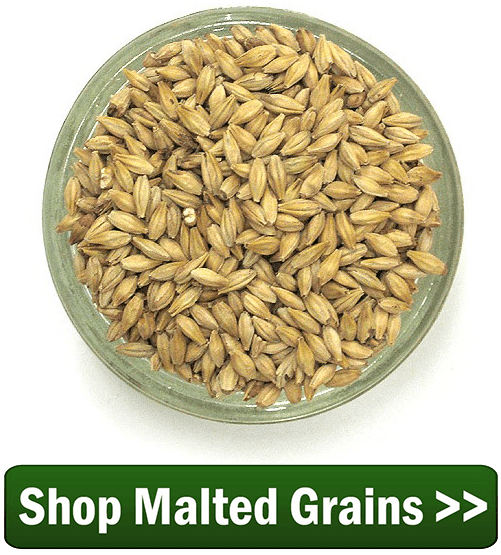 Today we have an extra special guest! In this exclusive interview, Dan Bies of Briess Malt & Ingredients Co. shares his tips for brewing with Briess malts and malt extracts, as well as some insights into the Briess product development process. This is great information for brewers of all levels! We hope you enjoy!
Today we have an extra special guest! In this exclusive interview, Dan Bies of Briess Malt & Ingredients Co. shares his tips for brewing with Briess malts and malt extracts, as well as some insights into the Briess product development process. This is great information for brewers of all levels! We hope you enjoy!
Dan works in the technical service department at Briess. He is their pilot brewer which essentially means he gets to have a lot of fun doing test batches of beer with vast array of products that Briess has to offer.
1. Hi Dan, thanks for taking the time to share your expertise with us today. For starters, can you tell us how you came to work with Briess, how long you’ve been with the company, and what you do there?
The day I started working in the Briess malt analysis lab is the day I became determined to start home brewing. I’ve been at Briess for six years now and my current position is as a Pilot Brewer, Technical Services Representative, and QA Chemist. I help to commercialize new extract products and assist customers with application-related questions on our existing products. I also do recipe and finished product development on a variety of beverages including beer, Malta, and Flavored Malt beverages.
2. Part of the fun of home brewing is developing your own recipes. Can you share with us some of things you think about in terms of malt and malt extract when developing a new beer recipe?
 When formulating with malt and extract my first consideration is a target style. Once I have this I try to think of what is traditionally used in its formulation and what attributes the ingredients bring to the character of the beer. Next I consider possible substitutions; this usually results in chewing on malts and making malt teas. Lastly, I brew. I typically use extract and grain interchangeably, but I almost always find myself steeping additional grain into extract brews.
When formulating with malt and extract my first consideration is a target style. Once I have this I try to think of what is traditionally used in its formulation and what attributes the ingredients bring to the character of the beer. Next I consider possible substitutions; this usually results in chewing on malts and making malt teas. Lastly, I brew. I typically use extract and grain interchangeably, but I almost always find myself steeping additional grain into extract brews.
3. What are some of the main differences between wort made from extract and wort made from grain? How do these products differ in the their effects on the final beer? Are there any additives in malt extract?
There’s almost no difference when using extracts Briess makes. We brew all of our malt extracts from the same Briess malts used by breweries and home brewers, using traditional brewing techniques in a 500-barrel brewery. By the way, it’s the second largest brewhouse in Wisconsin. Malt and water, that’s all that goes into our extracts. Absolutely no additives are used. Plus, all of our extracts are made using specialty malts to achieve full color and flavor. Some malt extract producers use the boil to develop color and flavor.
Extract brewers who use Briess extracts can achieve the same results as an all grain brewer, however they must take care in choosing their ingredients. Liquid malt extracts will develop color and some flavor if they’re not stored properly and exposed to heat. Time can do the same thing, but heat is the worst offender. So it’s really important that malt extracts are properly stored from the time they leave the Briess warehouse. Using the freshest possible liquid malt extract from a reliable distributor is key. You can tell the date a Briess malt extract was produced by reading the lot code. For example, 130521 would be May 21, 2013. The first two digits indicate the year, the middle two the month and the last two the date of production.
If you’re not sure of the freshness we recommend that you use dry extracts. These do not darken or develop flavor defects over time because the products are simply too dry for the negative reactions to occur.
4. Have you found a ratio of malt extract to grain that works well for you?
Depends on style and desired character. Not all Briess malts are showcased in the CBW® [Brewers Grade Malt Extracts] line. If I ever want to go heavy on specialty malts, but don’t have time for all-grain, I will formulate with specialty malts to match a flavor and color target, steep the malt, then add the remaining fermentables with a light malt extract. I feel that almost any style can be made with a large inclusion of light malt extract and steeped grains. A small amount of Munich 10 or Bonlander® Munich Malt steeped with Pilsen Light extract is a great substitute for Pale Ale Malt.
5. OK, now let’s switch gears and talk a little about product development. I’ve noticed that Briess releases a new variety of malt from time to time. How does Briess go about developing a new malt or malt extract product? What is that process like?
When we determine a new malt or malt extract we would like to add to our standard product list, the first thing we do is bring in all competitor products of the same or similar style. Then we conduct blind sensory, analyze the results and decide the target flavor, color and other attributes it should have. Then we produce pilot batches until the target product is met. Some of the recent introductions only took one try. Then a second blind sensory is held to see how our new malt fits into the category. That process is repeated, if necessary, until we are entirely happy with the results. Then we make several productions, use the new malt or extract in our pilot brewery, develop recipes that showcase it, and then brew at a number of breweries before officially releasing it. Our sensory panel includes our maltsters, brewers, experienced GABF judges, food scientists trained in sensory analysis, and other staff members.
 6. Are there any new products in the pipeline you’d like to share with us?
6. Are there any new products in the pipeline you’d like to share with us?
We recently started producing a high maltose yellow corn syrup for use in gluten-free beers and food. Produced from corn grits, this product is the equivalent of the wort brewers would get if they used corn in their brews; however, it is in a convenient liquid form. This makes brewing with this popular grain easy and avoids the needs for long separate grain cooking and boiling cycles. Because it’s made from grain and unrefined, this type of corn syrup has a pleasing corn flavor, yellow color and some of the vitamins and nutrients needed for yeast nutrition. We made this syrup using Organic Corn so it is all-natural and non-GMO.
Did you enjoy this post? Please take a moment to share it on your favorite social network! Thanks and cheers!
—–
David Ackley is a beer writer, brewer, and self-described “craft beer crusader.” He is a graduate of the Oskar Blues Brew School in Brevard, NC, and founder of the Local Beer Blog.
